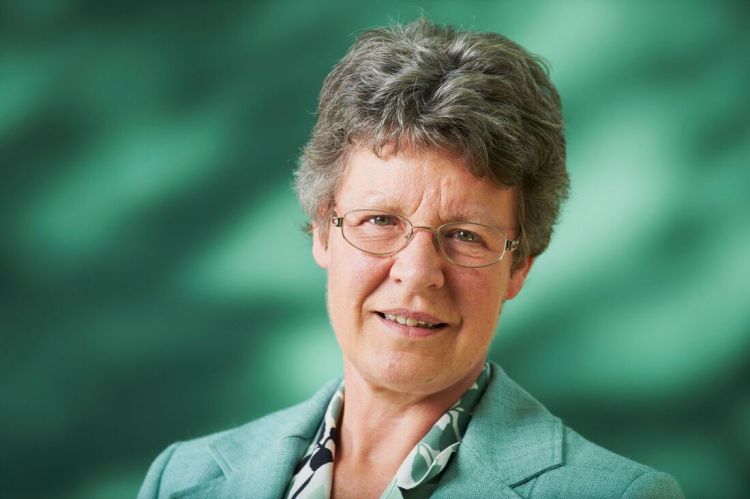Start with a bang.
JEDIDAH ISLERThis isn’t her first appearance in this blog either. Know her name: Dr. Jedidah Isler. I didn’t know this but we are from the same area. She was born in Virginia Beach, Virginia. I was born and raised in Hampton just across the bay. Dr. Isler earned her Bachelor’s degree in physics from Norfolk State University in Virginia, received her first Maser’s at
|
After earning her PhD from Yale in 2014, as the first African American woman to do so in physics, she went on to be a National Science Foundation Astrophysics Postdoctoral Fellow for 3 years at Vanderbilt University while she continued her research. Today – as in right now – she works at Dartmouth College as an assistant professor of astrophysics! She is not a trailblazer yet. She is currently trailblazing – at this very moment (*ALSO she is hiring!)! I’d like to honor her strength, courage, and hard work by including her as not only an amazing female astrophysicist you should know but also as the first amazing female astrophysicist you should know.
FABIOLA GIANOTTIDr. Fabiola Gianotti is currently the director-general of CERN – The European Organization for Nuclear Research – based in Switzerland. The CERN facility is mainly to study particle accelerations and mechanisms with particle accelerators like the Large Hadron Collider (LHC). The CERN facility is appropriately famous for several ground breaking discoveries since beginning operation including the famous 2012 discovery of the long-sought Higgs boson particle.
|
JOCELYN BELL BURNELLDr. Jocelyn Bell Burnell is, like, a personal hero of mine. Well, all of these women are but I have a soft spot for Jocelyn because we both got wowza’d by the same thing – pulsars. Dr. Burnell, however, was the first one ever to be wowza’d by pulsars. She was even a part of naming the darn things!
|
Dr. Burnell today is very well known for this discovery and for some small controversies around the Nobel Prize in Physics in 1974 going to her graduate supervisor for the discovery of pulsars. Although, Dr. Burnell seems to hold no resentment about it. I’ve had the opportunity to speak with Dr. Burnell and she is quite a fascinating woman who now advocates loudly for women and women with children in our field. She is a big, outspoken victim of imposter syndrome (which, for other victims, like me, greatly appreciate her bravery and wisdom). She is not only the discoverer of the beacon of light from pulsars but also is a beacon of hope for all women in the physics field.
1. American Institute of Physics Interview (2000).
2. National Geographic (2018).
3. Nobel Prize in Physics, 1974.
NANCY GRACE ROMANNancy was a pioneer right around the same time Katherine Johnson was pioneering for black women at NASA. In the mid-1900s, NASA was not a workplace for women. Women were discouraged from studying math and science, Nancy being no exception.
|
On May 20, 2020, NASA announced it will name the next-generation space telescope after Dr. Roman. The Wide Field Infrared Survey Telescope (WFIRST) is currently under development and is set to launch in the mid-2020s. The new name of the telescope is now The Nancy Grace Roman Space Telescope. It will investigate open questions in astrophysics and cosmology such as the force behind the universe’s expansion and to search for distant planets beyond our solar system. NASA rejoices Dr. Roman’s efforts, describing her as ‘tirelessly advocating for new tools that would allow scientists to study the broader universe from space’. This is also in memory of Dr. Roman, who passed away in 2018 at the age of 93.
CECILIA PAYNE- GAPOSCHKINCecilia is one of the women known as the Harvard Computers, which consisted of a number of women working as skilled astronomers, collecting and processing optical data at the Harvard Observatory in the late-1800s onwards. Cecilia was among Williamina Fleming, Annie Jump Cannon, and Henrietta Leavitt and others, who tirelessly studied light from stars. Studying stellar spectra, the Harvard computers made several major contributions to astronomy, including the famous stellar
|
In 1925, Cecelia submitted her PhD thesis, which was comprised of extensive analysis of a huge dataset of stellar spectra, all showing enormous abundances of hydrogen and helium, a surprising result at the time. Today, it is understood that hydrogen and helium are the most abundant elements in the universe. In the Milky Way alone, it is estimated the baryonic mass is roughly 74% hydrogen, 24% helium, and all else being remaining heavier elements. In 1925, however, it was still thought that stars were made up of similar composition as the planets, like Earth. There was no reason to believe otherwise until, alas, abundant evidence shows us that indeed, the universe is made up of mostly the two lightest elements. Her discovery profoundly changed our outlook on the universe, stellar evolution, cosmology, and more. By 1956, Cecelia had accomplished becoming the first female professor at Harvard and the first woman to become department chair. She passed away in Cambridge, Massachusetts in 1979.
1. American Physical Society (2015).
JEANETTE SCISSUMSo technically, Jeanette was a mathematician but I’ve included her as an astrophysicist because she is well-known for her contributions to knowledge on the Sun’s sunspot cycle. Jeanette was the first African-American mathematician to be employed at the NASA’s Marshall Space Flight Center, based in Huntsville, Alabama in 1964. Jeanette grew up in Alabama when segregation and other racial discriminatory laws and behaviors were normalized.
|
Six extraordinary women of science and their stories
|
We acknowledge these women fought various obstacles in the workplace from historical and systematic oppression of their gender and for some, they were discriminated against for their race as well. We applaud these women for their courage, knowledge, and wit that it took for them to accomplish their goals in spite of added difficulty.
|








poc2
Thanks for using our website and importantly leaving a comment! We might not have seen t his otherwise ❤ We're so happy that our post on Dr. Isler was of use to you and this post has been am amazing read, so many people we didn't know about before!!!
LikeLiked by 1 person